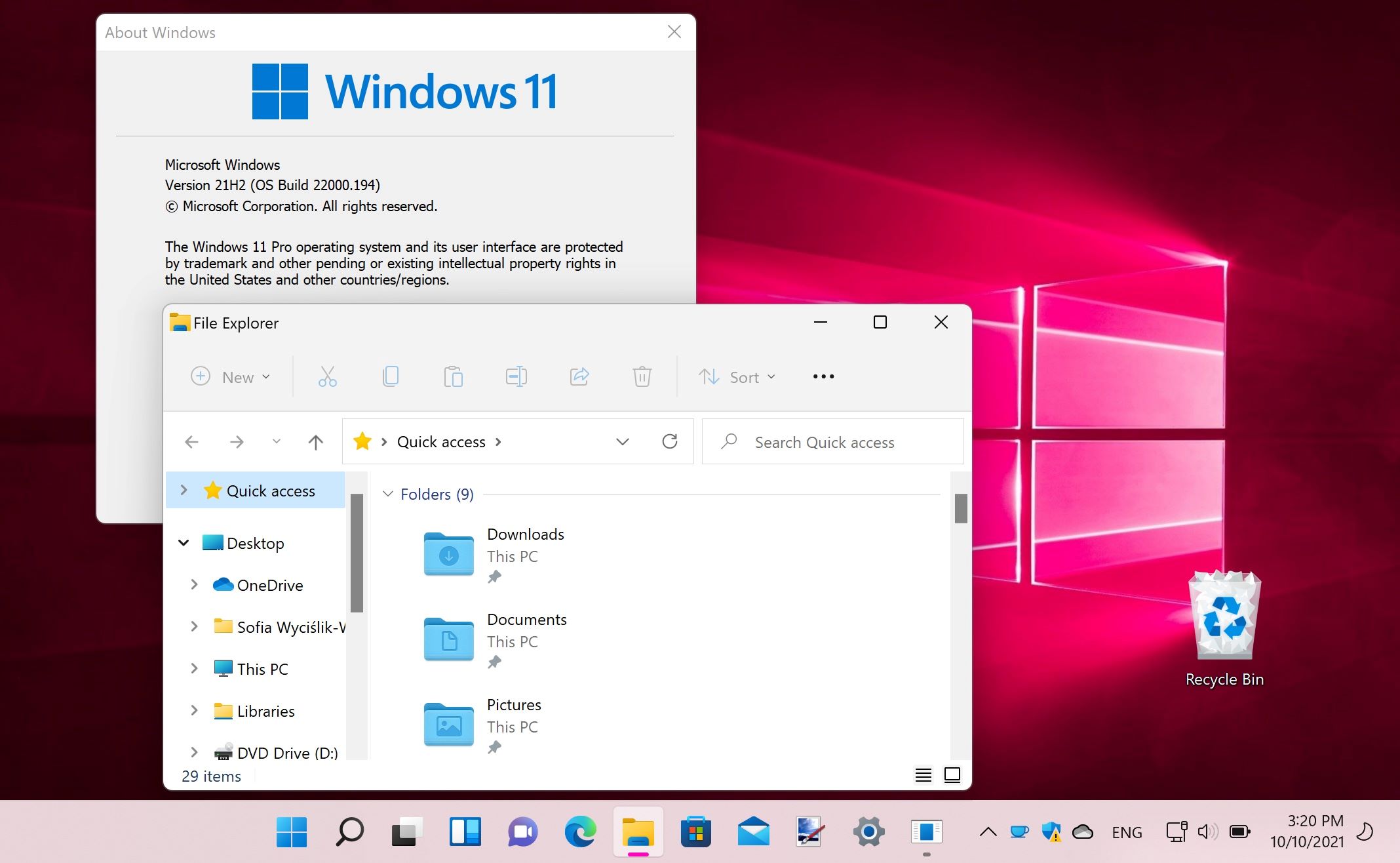Introduction
Are you a Firefox user who prefers an older version of the browser? Whether it's due to compatibility issues with certain extensions or a preference for a specific feature set, there are valid reasons for wanting to downgrade your Firefox version. While Firefox typically encourages users to stay updated with the latest version for security and performance enhancements, it's understandable that some users may have their reasons for reverting to an older iteration.
In this guide, we'll walk you through the process of downgrading your Firefox version. From uninstalling the current version to installing an older one and disabling automatic updates, we'll cover each step in detail to ensure a smooth transition. By the end of this tutorial, you'll have the knowledge and confidence to effectively downgrade your Firefox browser to the version of your choice.
So, if you're ready to take control of your Firefox browsing experience and explore the steps to downgrade your browser version, let's dive into the process together. Whether you're a seasoned Firefox user or just getting started with the browser, this guide is designed to equip you with the necessary know-how to make the transition seamlessly. Let's get started!
Step 1: Uninstall the current version of Firefox
Before downgrading your Firefox browser to an older version, it's essential to uninstall the current iteration. This process ensures a clean slate for the installation of the older version, minimizing potential conflicts and ensuring a smooth transition. Here's a detailed walkthrough of how to uninstall your current Firefox version:
-
Open the Control Panel: Navigate to the Control Panel on your Windows computer. You can access the Control Panel by searching for it in the Windows search bar or by locating it in the Start menu.
-
Access Programs and Features: Within the Control Panel, locate and click on "Programs" or "Programs and Features," depending on your Windows version.
-
Locate Firefox: In the list of installed programs, find Mozilla Firefox. Click on it to select the application.
-
Uninstall Firefox: After selecting Mozilla Firefox, click on the "Uninstall" or "Change" option at the top of the window. This action will initiate the uninstallation process.
-
Follow the Uninstallation Wizard: A prompt will appear, guiding you through the uninstallation process. Follow the on-screen instructions to proceed with the removal of Firefox from your system.
-
Complete the Uninstallation: Once the uninstallation process is complete, restart your computer to ensure that any remaining components are fully removed.
If you're using a different operating system such as macOS or Linux, the process of uninstalling Firefox may vary slightly. For macOS users, dragging the Firefox application to the Trash and emptying it will effectively uninstall the browser. Linux users can refer to their specific package management system to uninstall Firefox.
By following these steps to uninstall your current version of Firefox, you'll pave the way for a successful downgrade to an older version. With the current version removed from your system, you can proceed to the next step of downloading the older version of Firefox, which we'll cover in the following section.
Step 2: Download the older version of Firefox
Now that you've successfully uninstalled the current version of Firefox, it's time to acquire the older version that you wish to install. Here's a comprehensive guide on how to download an older version of Firefox:
-
Visit the Mozilla Firefox Archive: Start by accessing the Mozilla Firefox Archive, which hosts a collection of older Firefox versions. You can find this archive by searching for "Mozilla Firefox Archive" in your preferred search engine. Once on the archive's website, you'll be presented with a list of Firefox versions organized by release date.
-
Select the Desired Version: Browse through the list of available Firefox versions and identify the specific iteration that you want to download. Each version is typically accompanied by its release date and a brief description, allowing you to make an informed decision based on your preferences or requirements.
-
Download the Installer: Once you've identified the older version you wish to install, click on the associated download link to obtain the installer file. Ensure that you're downloading the version compatible with your operating system, whether it's Windows, macOS, or Linux.
-
Save the Installer: After clicking the download link, you'll be prompted to save the installer file to a location of your choice on your computer. Select an easily accessible location, such as your desktop or downloads folder, to simplify the installation process in the next step.
-
Verify the Download: It's essential to verify the integrity of the downloaded installer to ensure that it hasn't been corrupted during the download process. You can do this by comparing the file size and checksum provided on the archive's website with those of the downloaded file.
By following these steps, you'll successfully download the older version of Firefox, setting the stage for the next phase of the downgrade process. With the installer file securely saved on your computer, you're ready to proceed to the installation of the older Firefox version in the subsequent step.
Step 3: Install the older version of Firefox
With the older version of Firefox installer file at your disposal, you're now ready to initiate the installation process. Follow these steps to seamlessly install the older version of Firefox on your system:
-
Locate the Installer: Begin by locating the downloaded installer file on your computer. Depending on your browser settings, the file may be found in your designated download folder or on the desktop. Once located, double-click on the installer file to launch the installation wizard.
-
Initiate the Installation: Upon launching the installer, you'll be prompted to begin the installation process. Follow the on-screen instructions to proceed with the installation. This typically involves agreeing to the terms and conditions, selecting the installation directory, and choosing any additional components or features that may be offered during the installation.
-
Customize Installation Options: Some older versions of Firefox may provide customization options during the installation process. This could include the ability to select specific components or features to include or exclude from the installation. Take the time to review and customize these options based on your preferences.
-
Complete the Installation: Once you've confirmed your installation preferences, proceed with the installation process. The installer will then proceed to install the older version of Firefox on your system. Depending on the speed of your computer and the version of Firefox being installed, this process may take a few minutes to complete.
-
Launch the Older Version: After the installation is complete, you can launch the older version of Firefox from your desktop shortcut or the installation directory. Upon launching the browser, take a moment to ensure that the version corresponds to the one you intended to install.
-
Verify Functionality: It's advisable to verify the functionality of the older version of Firefox after installation. Test basic browsing functions, extensions, and any specific features that prompted you to downgrade. This step ensures that the older version meets your expectations and operates as intended on your system.
By following these steps, you'll successfully install the older version of Firefox, allowing you to experience the specific iteration of the browser that aligns with your preferences or requirements. With the older version now installed on your system, the final step involves disabling automatic updates to prevent the browser from reverting to a newer version without your consent.
Step 4: Disable automatic updates
Once you have successfully downgraded to the older version of Firefox, it's crucial to disable automatic updates to prevent the browser from automatically updating to the latest version. Here's a detailed guide on how to disable automatic updates in Firefox:
-
Access the Options Menu: Launch the older version of Firefox and click on the menu button located in the top-right corner of the browser window. From the dropdown menu, select "Options" to access the browser settings.
-
Navigate to the General Tab: Within the Options menu, navigate to the "General" tab, which is typically the default landing page when accessing Firefox settings. This tab houses general browser settings, including options related to updates.
-
Locate the Firefox Updates Section: Scroll down the General tab until you locate the "Firefox Updates" section. This section contains settings related to Firefox updates, including options to enable or disable automatic updates.
-
Disable Automatic Updates: Within the Firefox Updates section, you'll find the option to disable automatic updates. Uncheck the box next to "Automatically install updates (recommended: improved security)" to prevent Firefox from automatically updating to newer versions.
-
Confirm the Changes: After disabling automatic updates, it's essential to confirm the changes by clicking on the "OK" or "Save" button within the Options menu. This action ensures that your preference to disable automatic updates is saved and applied to the browser.
-
Verify Update Settings: To double-check that automatic updates are indeed disabled, you can revisit the General tab and ensure that the checkbox next to "Automatically install updates" remains unchecked. This verification step provides peace of mind that your update preferences have been successfully configured.
By following these steps to disable automatic updates in the older version of Firefox, you can maintain the specific iteration of the browser without the risk of it being automatically updated to a newer version. This level of control over updates allows you to stay aligned with your preferences and ensures a stable browsing experience with the older Firefox version.
With automatic updates disabled, you can continue to enjoy the features and functionalities of the older Firefox version without the concern of it being automatically updated. This step effectively concludes the process of downgrading your Firefox version and empowers you to maintain the specific browser iteration that best suits your needs.
Conclusion
In conclusion, the process of downgrading your Firefox version to an older iteration involves a series of deliberate steps aimed at ensuring a seamless transition. By following the steps outlined in this guide, you've taken control of your Firefox browsing experience and tailored it to your specific preferences or requirements.
Uninstalling the current version of Firefox served as the initial step, providing a clean slate for the installation of the older version. This ensured that potential conflicts were minimized, setting the stage for a successful downgrade. Subsequently, downloading the older version from the Mozilla Firefox Archive allowed you to select the specific iteration that aligns with your needs, whether it's a preference for certain features or compatibility with specific extensions.
The installation of the older version marked a pivotal moment in the process, as it empowered you to experience the Firefox version of your choice. By customizing the installation options and verifying the functionality of the older version, you've gained confidence in the stability and performance of the specific iteration you've installed.
Disabling automatic updates was the final crucial step, granting you control over the browser's update process. By preventing automatic updates, you've safeguarded the older version, ensuring that it remains consistent with your preferences without the risk of being automatically updated to a newer version.
In essence, the process of downgrading your Firefox version is a testament to the flexibility and customization options offered by the browser. It underscores the importance of user autonomy, allowing individuals to tailor their browsing experience to their unique needs and preferences.
As you continue to explore the capabilities of the older Firefox version, remember that you have the power to revisit the update settings and make adjustments as needed. Whether it's to maintain a specific feature set, compatibility with extensions, or simply to preserve a familiar interface, the ability to downgrade your Firefox version puts you in the driver's seat of your browsing experience.
With the knowledge and confidence gained from this guide, you're well-equipped to navigate the process of downgrading your Firefox version whenever the need arises. Embrace the freedom to tailor your browsing experience and enjoy the specific features and functionalities that matter most to you.

























